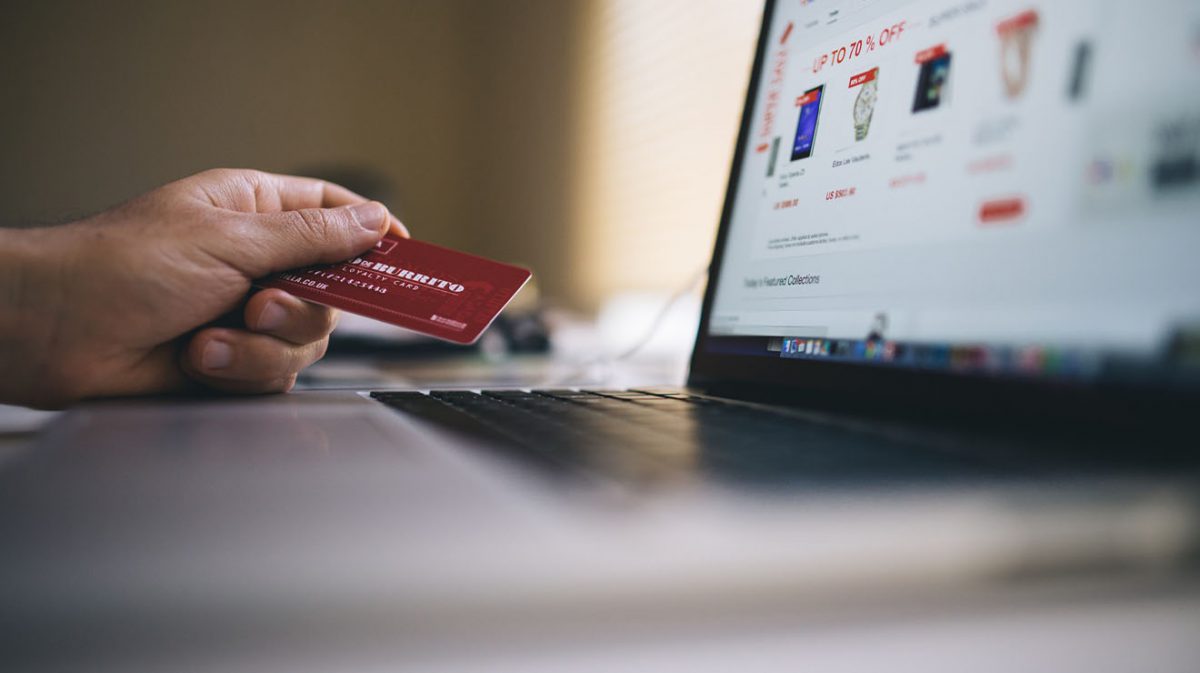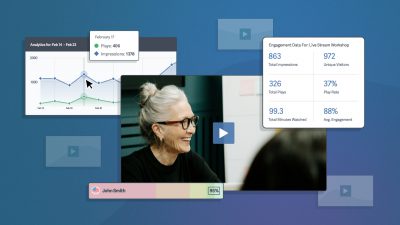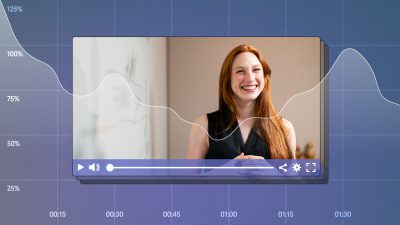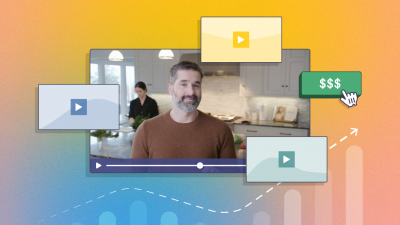It’s no secret – video is everywhere! Brands are using video in new and exciting ways and enjoying unheard of results, like higher time on page, lower bounce rate, and jumps in SEO. But why? What is it about video that leads to higher engagement and interaction rates?
It has a lot to do with human psychology. Video as a medium is more engaging than other mediums, tugging at our heartstrings and captivating our attention better than anything else. If you’ve ever cried at a movie, you know what we mean! And, when you use it in your marketing efforts, a lot of these same effects carry through. The difference? That emotion and connection can ultimately help convert a viewer into a paying customer.
In this guest post from our friends at Lemonlight, we’ll take a look at just why video is such a powerhouse and how you can use that to your advantage.
1. One minute of video is worth 1.8 million words.
If a picture is worth a thousand words, video is worth over a million!
Think about it – at 30 frames per second, you get the equivalent of 30,000 words’ worth every second of video. Multiply that by how many seconds long your video is, and that gives you a good idea of how many words your video is worth.
This is anecdotal, of course, but it gives you a good idea of how much more impactful video can be that just images alone. After all, how much could you communicate in 1.8 million words? Even though you’re not literally saying that much (your average minute-long video is about 120 words long), you’re communicating so much more in thoughts, feelings, connections, emotions, memories, and more.
Think about the 60,000 fallacy, an often-cited statistic that claims our brains can process visuals 60,000 times faster than text. Sounds incredible, right?
Though this stat has yet to actually be proven true, it does justify something we so deeply believe to be true – that visuals are more engaging and more powerful than any other form of digital communication. Even if we don’t actually process visuals that efficiently, there is proof we process images faster than text. An MIT study showed the human brain can identify images in as little as 13 milliseconds. Combine that with audio and live, moving images and you’ve got one powerful marketing tool.
2. Video stimulates numerous senses – telling a more extensive story than just images or words alone can.
Because video is both visual and auditory, it tells a more evocative, memorable story than any other medium. And more than that, evoking these senses to their fullest, for instance using very specific, bright colors, or relatable dialogue, can covertly influence a user’s behavior, sparking memories or nostalgia, fear or curiosity. This emotional response out of your viewers is what fuels their passion and builds a stronger bond between them and your brand.
According to the University of Southern California, an emotional response to an ad has far greater influence on a consumer’s intent to buy than the ad’s content does. So you’ll want to use all the tools at your disposal to get those emotions running.
Not only does an emotional response illicit action, but it also keeps a user watching. Build an emotional rollercoaster – viewers are more likely to continue watching an ad if they experience emotional ups and downs.
Take a look at this video for Robert F. Kennedy High School in Los Angeles. They create a strong emotional connection between the viewer and the students, faculty, and the school’s mission to help students succeed.
3. Video helps create concrete associations.
More specifically, your video should create a strong association between the viewer and your brand.
If someone sees a green mermaid, chances are high they’ll think of Starbucks. If someone hears “I’m lovin’ it,” they’ll think of McDonald’s. These associations are built through branding, and there’s no more effective way to communicate your branding than through video. And there’s no better guarantee of purchase than high brand recall.
How do you do this? Yes, these brand associations take a long time to build. It takes seeing your ad campaigns over and over again before they begin to stand out. But video is one of the easiest ways to reach your audience and one of the most memorable.
The secret? Include characters in your videos that represent your target audience. Seeing characters who look like themselves can help viewers picture themselves using your product or service. Work on creating an aesthetic and make sure all of your marketing collateral follows this same aesthetic. Keep your brand colors, your logo, your style, and more, the same (more on that below.)
Whether it’s a physical association, an emotional association, or an association between the viewer’s pain points and the solution your company offers, your video will help trigger a feeling of belonging within the viewer, one that could turn into a sale.
4. Video helps people remember your brand.
The biggest benefit of creating these brand associations? Developing brand recall and loyalty!
Viewers retain 95 percent of a message when they watch it in a video compared to 10 percent when they read it in text. That means people are remembering more of what they see than what they read.
That makes video one of the best mediums for not only cementing your users’ brand associations, but for helping them actually remember your brand.
It seems obvious that video would help users remember things – its visual nature helps your brand stand out, like the logo, color, aesthetic, and style. When you do this over time, you create a visual identity, one that becomes the cornerstone of brand recall.
But it shouldn’t take seeing something that reminds a user of your brand to help them remember you. Once these associations are built, your brand will be top of mind. Now, your job becomes helping the user think of you when they’re faced with a problem you solve. Do this by driving home your branding in connection with your purpose.
Take a look at how Angel Fire Optical does this in their brand video. They portray strong visuals, bright colors, and energetic audio to not only communicate who they are as a brand, but make you think of them next time you need a set of prescription sunglasses.
5. Once a viewer sees your video, they’ll begin to see you everywhere.
It’s called the frequency illusion – and if used strategically, it can lead to a huge lift in your marketing efforts.
Have you ever seen a commercial for something, say a pair of shoes, that didn’t necessarily stand out? You don’t think much of it, but then suddenly, you start to see that pair of shoes everywhere. It’s a phenomenon that occurs when you notice something for the first time and then it seemingly begins to surround you in ads, conversations, on the street, everywhere you look. You’re either going crazy, or maybe this new pair of shoes really is everywhere in the blink of eye?
Turns out, two things happen. One, our natural selective attention kicks in without our knowing it, which makes something like a commercial stand out subconsciously. Second, our confirmation bias kicks in, which confirms our opinion that, yes, everyone is now wearing these shoes, and yes, it’s weird.
In marketing, you can use this psychological trick to retarget your consumer. Show them a video on your website, then show them some banner ads, then, show them social ads. Create consistent brand messaging across distinct channels and you’ll help usher users along the buyer’s journey and, before you know it, your visitor will start to seek you out for more information.
Video is no doubt a powerful tool. Use these video psychology tips to make your viewers feel special, answer their questions, and keep them engaged. The more you get to know your audience, their behaviors, and their likes and dislikes, the more prepared you’ll be to create a stunning video. Better yet, the more likely your viewers will be to convert!








